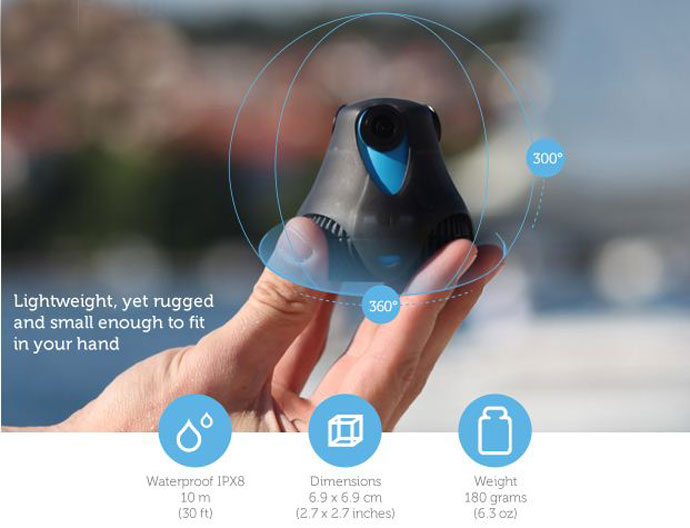The 360cam from GIROPTIC is a new digital camera that takes 360-degree pictures heralds a new generation of bicycle helmet cameras.
Helmet cams are used by an increasing number of cyclists for the video evidence they can provide in the event of a road traffic collision. The flaw with conventional cameras is that they offer only a view of the road ahead.
The 360cam uses three specially-designed 185º fish-eye lenses to capture a field of view broader than any rival camera. Instead of using a computer to stitch together a 360-degree image, the camera creates .mp4 or .jpg files inside its housing. A variety of accessories allow the cam to mounted in a variety of ways or even used under water.
The camera can be pre-ordered via Kickstarter.
How does the law regard helmet cam evidence?
It is notoriously difficult for cyclists to prove a motorist is at fault in the case of a collision. A no-win, no-fee cyclist legal service can be a highly effective way to secure compensation, but a panoramic view of a road traffic collision would prove invaluable in most cases.
There is no reason why helmet cam footage cannot be admitted as evidence like CCTV is used. It is likely that a witness statement would have to accompany the helmet cam footage and it would have to be downloaded to a CD with a certificate (preferably countersigned by a solicitor) stating that it had not been altered in any way from its original digital format.
“a fair crack at justice”
Road safety campaigners in Britain have long campaigned for no-fault liability, a principle that makes motorists financially liable for collisions with pedestrians or cyclists. Only when the pedestrian or cyclist was proved to be negligent would the driver avoid paying compensation through their insurance.
Such a system currently works without problem in other areas of Europe because it recognises that the drivers of faster, heavier vehicles have a duty of care and that if a pedestrian or cyclist is injured in a road traffic collision it can be difficult for them to accurately recollect the event.
Cyclists will increasingly rely on technology to ensure they get a fair crack at justice following a road traffic collision. At present, things are often stacked in the motorist’s favour.
Cycle insurance with built-in legal protection
Cycle insurance from the ETA includes new-for-old replacement and accidental damage, £5m third party insurance, personal accident cover, worldwide cover and if you should be knocked off your bike our specialist legal team fight your corner.

Andrew
I’m a cyclist and a lawyer and I’d have to say I’m against no-fault liability. I cycle in central London and I see inconsiderate and sometimes dangerous cycling almost every day. I see cyclists running red lights, cycling on the pavement, going the wrong way down one-way streets, pulling out without looking. I feel more in danger of being hit by another cyclist (and maybe knocked into the path of a lorry) than being hit by the lorry itself. Exactly that happened to a friend of mine recently. In contrast, I find that most motor traffic in central London is reasonably considerate of cyclists who cycle responsibly.
No-fault liability could encourage some cyclists to be even more reckless. That would make my cycle commute even more dangerous – it would increase the risk of being hit by another cyclist – and it would make motorists less respectful of cyclists.
Chris Payne
No-fault liability for cyclists is commonplace on the European continent and there have been no such problems. Furthermore, it’s a change to the law that would have benfit for us all, not only those of us who cycle. Churchill insurance last year appealed against the High Court ruling that ordered it pay £5m compensation to a 16-year-old girl who was left brain-damaged after she was run over by one of its customers, who was speeding at the time.
Bethany Probert was walking on a grass verge when she was struck by the car. but the insurer claimed she was partly to blame because she was not wearing a high-visibility jacket at the time.
This is the peverse culture that no-fault liabilty seeks to change.